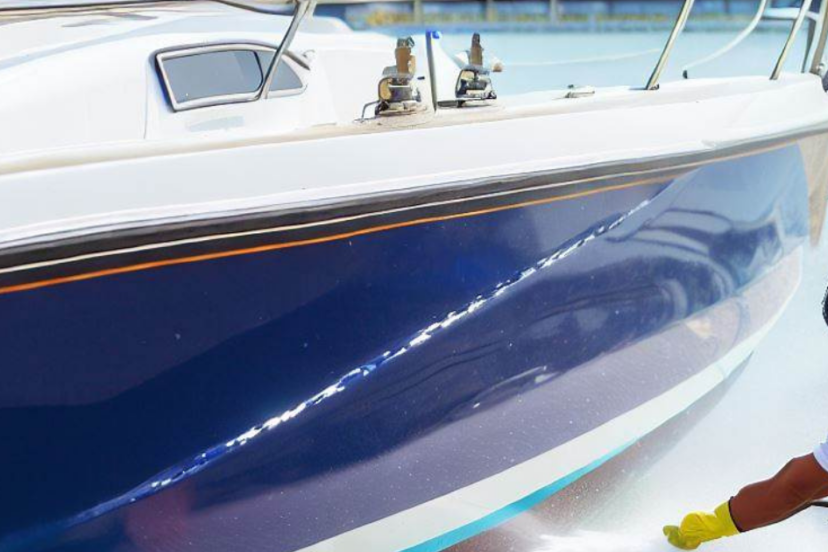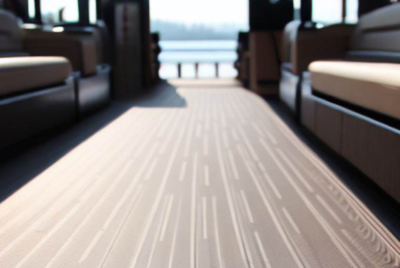Boat Detailing: Keeping Your Vessel Pristine and Protected
The Benefits of Boat Detailing
- Restore the appearance and shine of your boat: Over time, boats are exposed to various environmental elements such as UV rays, saltwater, dirt, and pollutants. These factors can cause the paint, gel coat, and other surfaces to fade, lose their luster, and accumulate grime. Detailing helps to remove oxidation, stains, and buildup, restoring the boat’s original shine and vibrant appearance.
- Protect your boat from environmental damage: The marine environment can be harsh, with constant exposure to sunlight, saltwater, and other corrosive elements. Detailing provides a protective layer by applying polishes, waxes, and sealants that act as barriers against UV rays, saltwater intrusion, and other environmental hazards. This protection helps prevent fading, chalking, corrosion, and other forms of damage.
- Enhance the resale value of your boat: A well-maintained and properly detailed boat attracts potential buyers and commands a higher resale value. The exterior and interior condition of a boat significantly influence its market appeal. By regularly detailing your boat, you not only enjoy its pristine appearance but also ensure a higher return on investment when it’s time to sell.
Steps for Effective Boat Detailing
- Washing the boat: Start by thoroughly washing the entire boat to remove dirt, grime, and salt deposits. Use a boat-specific soap, soft brush, and clean water to gently scrub the surfaces. Pay attention to hard-to-reach areas, such as the hull, deck floors, and crevices.
- Cleaning and polishing the hull: Once the boat is clean, focus on restoring the shine and removing oxidation from the hull. Depending on the boat’s material (fiberglass, aluminum, etc.), choose the appropriate cleaner and polish. Use a buffer or polishing machine to apply the product and gently work it into the surface. This step brings back the glossy finish and removes any imperfections.
- Treating and protecting the interior: Detailing is not limited to the exterior. It’s equally important to address the interior of your boat. Clean the upholstery, carpets, and other surfaces using suitable cleaners. Treat any vinyl or leather areas with conditioners to prevent cracking and maintain a supple feel. Additionally, clean and treat any wood surfaces according to their specific requirements.
- Refurbishing metal and hardware: Pay attention to the metal components, such as railings, cleats, and fittings. Clean and polish these areas using specialized metal cleaners or polishes to remove oxidation and restore their shine. Check for any loose or damaged hardware and address it promptly to maintain the integrity of your boat.
- Addressing specific areas: Take time to address specific areas that require special attention. Clean the windows and treat them with water repellent products for improved visibility. If your boat has canvas covers or upholstery, clean and treat them with appropriate cleaners and protectants. Pay attention to any other features or accessories your boat may have and give them the necessary care.
Essential Tools and Products for Boat Detailing
To achieve optimal results in boat detailing, it’s essential to have the right tools and products.
- Cleaning agents: Use marine-grade boat cleaners that are safe for different surfaces such as fiberglass, aluminum, vinyl, and upholstery. Look for biodegradable options to minimize environmental impact.
- Polishes and waxes: Select high-quality boat polishes and waxes designed to restore shine and provide long-lasting protection. Choose products based on the boat’s material and the level of oxidation or damage.
- Buffers and polishing machines: Invest in a good-quality buffer or polishing machine to efficiently apply polishes and remove oxidation. These tools can save time and effort while delivering professional results.
- Soft brushes and microfiber towels: Use soft-bristled brushes to clean surfaces without scratching them. Microfiber towels are excellent for drying, buffing, and applying products without leaving lint or scratches.
- Protective gear: Wear gloves, safety goggles, and protective clothing to safeguard yourself while handling cleaning agents and working with machinery.
Remember to follow the manufacturer’s instructions for each tool and cleaning product, as well as safety guidelines, to ensure effective boat detailing and to extend the life of your tools. Proper cleaning and storage are essential to maintain the tools’ performance and prevent any damage or contamination.
Maintaining the Detailing Results
- Establish a regular maintenance routine: Create a schedule for routine cleaning and maintenance tasks. Regularly wash your boat after each use and perform light cleaning to remove dirt, salt, and other contaminants. This will help prevent buildup and make future detailing easier.
- Tips for cleaning and upkeep: Between detailing sessions, keep your boat clean by rinsing it with fresh water after saltwater use. Use boat-friendly cleaning products to address any specific issues, such as stains or scuff marks. Wipe down surfaces regularly and address spills or messes promptly.
- Storage and winterization considerations:Proper storage is crucial for protecting your boat. When not in use, store it in a dry and covered area to shield it from the elements. Follow appropriate winterization procedures if you live in a region with freezing temperatures to prevent damage from ice and cold weather conditions.
1o Step Boat Detailing Guide
Step 1: Rinse the Boat
Start by using the hose with a spray nozzle to rinse off loose dirt and debris from the pontoon boat. This helps to prepare the surface for deep cleaning.
Step 2: Prepare the Cleaning Solution
Fill the bucket with water and add the appropriate amount of marine-grade cleaner. Mix it well to create a cleaning solution.
Step 3: Scrub the Boat
Wear the boat cleaning mitt and dip it into the cleaning solution. Gently scrub the boat’s surfaces, including the hull, deck, and seats, using circular motions. Use the boat cleaning brush with soft bristles to tackle tougher stains and grime.
Step 4: Clean Hard-to-Reach Areas
Use the soft bristle brush or toothbrush with marine-grade cleaner to clean tight spots and crevices, such as seams, corners, and hinges. This ensures a detailed cleaning and helps maintain every part of the boat.
Step 5: Rinse Thoroughly
Use the hose with a spray nozzle again to rinse off the cleaning solution and any remaining dirt from the boat. Ensure no cleaning residues are left behind.
Step 6: Dry the Boat
Use microfiber towels to dry the boat thoroughly. These towels are gentle on the boat’s surfaces and absorb water effectively.
Step 7: Apply Boat Wax or Polish
Apply boat wax or polish to the boat’s gel coat to protect it from UV rays, water spots, and oxidation. Use a soft cloth or applicator pad for an even application.
Step 8: Use the Polishing Machine/Buffer
For a professional finish, use the polishing machine or buffer in circular motions to spread and buff the wax or polish evenly.
Step 9: Inspect and Touch Up
Inspect the boat’s surfaces for any missed spots or areas that may need touch-up. Address these areas using the appropriate tools and cleaning products.
Step 10: Clean and Store Tools
Rinse all the cleaning tools thoroughly, removing any remaining cleaning agents. Allow them to dry completely before storing them in a clean, dry place. Proper cleaning and storage help prolong the tools’ lifespan.
Tips and Suggestions:
- Work in sections to ensure thorough cleaning and prevent the cleaning solution from drying on the boat’s surface.
- Avoid using abrasive materials or harsh chemicals that could damage the boat’s gel coat or other surfaces.
- Clean the boat regularly, especially after each outing, to maintain its appearance and protect it from environmental elements.
- Consider using a boat cover when the boat is not in use to shield it from the sun, rain, and debris, reducing the need for frequent detailing.
Always follow the manufacturer’s instructions for the cleaning products and tools to ensure optimal results and safety.
Performing thorough boat detailing not only enhances the boat’s appearance but also helps maintain its value and prolong its life. Regular cleaning and proper care using the right tools contribute to a well-maintained and enjoyable boating experience.
Conclusion
FAQs
1. How often should I detail my boat?
2. Can I use household cleaning products on my boat?
3. Are there eco-friendly options for boat detailing?
4. Can I detail my boat myself, or should I hire a professional?
5. How can I protect my boat’s interior from sun damage?
*We may earn a commission from purchases made through our links, at no cost to you. This does not affect our product recommendations. Please see our disclosure to learn more.



